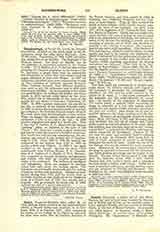

Caughnawaga, or SAULT ST. LOUIS, an Iroquois reservation, situated on the south bank of the St. Lawrence, about ten miles above Montreal Area, 12,327 acres. Population, in 1905, 2,100; all Catholics, except five or six families. The language is the Mohawk dialect. The Sault (or Rapids) was an old seigniory, or concession, granted to the Jesuits in 1680. To P. Raffeix, S.J., is due the idea of thus grouping the Iroquois neophytes on the banks of the St. Lawrence, to guard them from the persecution and temptation to which they were subject amid the pagan influences of their own villages. In 1667 the missionary prevailed upon seven communities to take up their residence at Laprairie, opposite Montreal. Other Christian Iroquois, from different localities, soon came to join the settlement, and in 1670 there were twenty families. As the proximity of the whites was prejudicial to the Indians, the mission was transferred, in 1676, several miles higher up the river. This second site is memorable as the scene of the saintly life and death of Catherine Tegakwitha (d. 1680). In 1890 a granite monument was erected on the site, in memory of the humble Iroquois virgin. In 1689, to escape the threatened attacks of their pagan tribesmen, the Christian Iroquois sought refuge in Montreal, where they remained eight or nine months. When the danger had passed, they founded another settlement a mile or two above the last. In 1696 another migration took place to a fourth site. Here it was that P. Lafitau, S.J., discovered the famous “ginseng” plant, so valuable in the eyes of the Chinese. The discovery created a great sensation, and was for a time the source of a lucrative commerce. This fourth site still proving unsatisfactory, the settlement was moved to the present site of Caughnawaga in 1716. From 1667 to 1783 the mission was conducted by the Jesuits; from 1783 to 1903 by secular priests and Oblates. In 1903 it was again confided to the Jesuits. Among the more noted missionaries were Fathers Bruyas, S.J., Chauchetiere, S.J., Lafitau, S.J., Burtin, O. M. I., Marcoux, who composed an Iroquois dictionary and grammar, and Forbes, who drew up complete genealogical tables of the settlement. The Indians are intelligent and industrious. Some are engaged in farming, others take rafts down the Lachine rapids. The industries are principally beadwork and the making of lacrosse rackets and snowshoes. Besides the presbytery, dating from 1716, and the church, built in 1719 and restored in 1845, there are in the village the ruins of a French fort of 1754, two schools, and a hospital. The government by chiefs was, in 1889, replaced by that of a mayor and council.
JOSEPH GRAS

